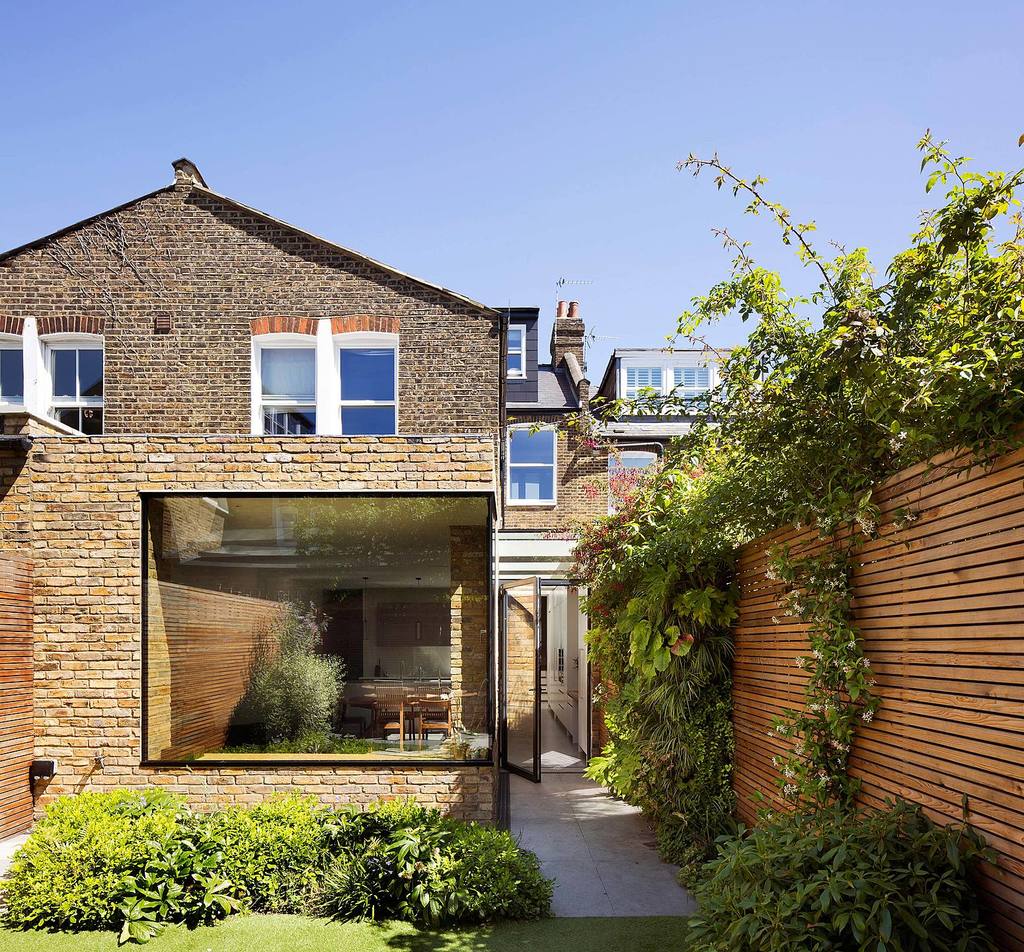Your Guide - Wraparound Extensions
Share
Copy Link
A wraparound extension is a ground floor, L-shaped extension which extends to the side and rear of the home. By maximising the space to the side and extending to the rear, the wraparound extension gives an impressive extension which will transform how you live in your home.
Wraparound extensions are most common on period properties, where the side return is often unused space and adds width to the rear extension.
We share our useful guide to wraparound extensions, as well as some of our favourites out there to give you some wonderful inspiration.
If you are thinking about a wraparound extension in the near future and need some help finding an architect or designer, we can match you with the most suitable ones for your project.
Find an architect or designer

Wraparound extension by Larissa Johnstone Architects. The brickwork is in-keeping with original home to allow a seamless flow.
What is the cost of a wraparound extension?
To get the best estimate of your wraparound extension cost, check out our extension cost calculator. You simply need to enter some details on the size, your location and the rooms you are renovating, and our cost calculator will give you a high level view. We have included everything in here, including VAT, finishes and professional fees, so it should give you a good indication of cost ahead of working with an architect.
Once you have a high level view, your architect and builder will guide you as you go to give you a firm view of the costs. This cost will vary depending on your design, product specification, individual property and location. For example, if you are looking to finish the exterior of the wraparound extension with metal cladding, then the costs will be considerably more than if you are using only brickwork.

Impressive wraparound extension with huge sliding doors and finished in dark grey metal cladding. Extension by Material Works Architecture
How long does a wraparound extension take to build?
You should allow between 3-4 months for the actual build of the wraparound extension, this will allow for the build as well as fitting the kitchen, doors and finishing's.
The actual planning of the wraparound extension could take around 6 months, this includes getting planning permission approved and any other relevant permissions, such as the Party Wall Act.

Wraparound extension by Delve Architects. The minimal framed door work well with the bi-folding feature window.
Do I need planning permission for a wraparound extension?
Although you can carry out both a side return extension and a rear extension within permitted development (subject to the relevant planning permission requirements), you can't join together the two to form a wraparound extension without planning permission approval.
To allow for a smooth planning permission process, planners will be looking at things such as the impact on your neighbours light and privacy.
A double storey wraparound extension will unlikely to be permitted if you live in a terraced home. We recommend that you work with a local architect or architectural designer who will have worked with the local planning authority before and likely to have worked on projects similar to yours, so will be comfortable about designs that will be approved.
For a fee (which varies depending on council), your local council will offer pre-application advice which will give feedback on what you can or can’t get planning permission for and on changes you may wish to make. This is invaluable and highly recommended for a straightforward and successful planning application.

The contemporary wraparound extension contrasts with the original building - by Hone Studio
Are there any other regulations that I need to be aware of for a wraparound extension?
There are several other regulations and consents that you should be aware of which are separate to planning permission when you are carrying out a wraparound extension.
Building regulations
Building regulations are so important to ensure that your wraparound extension meets a minimum standard and will be required when carrying out a wraparound extension. Your architect can work with a structural engineer to prepare the technical drawings and calculations to be submitted for building control approval. Read our guide to building regulations if you would like to find out more about the process.
Party Wall Act
The Party Wall Act applies to homes in England and Wales and is a common requirement when you are carrying out a wraparound extension, particularly on terraced and semi detached properties. If this does apply to you, then you must serve a Party Wall notice to your neighbour(s). If you need to find out more, read our expert advice article.
Right of Light
Another consideration is your neighbours Right of Light when you are building a wraparound extension. This is another regulation that applies in England and Wales, where your neighbour is entitled to an amount of light into their home. If you would like more information on the Right of Light then read our expert advice article.

Beautiful wraparound extension by Granit Architects - the crittall doors give this a modern industrial look
What are the glazing options for a wraparound extension?
There is so much choice to really create a spectacular wraparound extension.
Overhead structural glazing is a popular choice to the side of the extension. This works well to let light in from above and keep the space open and bright, as well as creating a wonderful feature.
Slimline windows and doors give the feeling of minimalism and space and you can have them both on the side and the rear of the extension. The beauty of the wraparound extension is that it allows you to be creative and have different feature glazing on both parts.
We are seeing modern oriel windows, which allow a wonderful view into the garden and a seating area too. They can open up the space so well and allow the light to stream into the wraparound extension.

Wraparound extension by ARCHEA. An oriel window with seating allows wonderful views into the garden. The structural glazing in the roof allows the maximum light to flood in.
What exterior styles are there for wraparound extensions?
If you want your wraparound extension to be in keeping with the original home, using a similar style of brick works well for a seamless look. This is a common choice for wraparound extensions on Victorian and Edwardian homes where you want to retain the style of the period property.
Rendering is a cost effective option and allows you to either contrast with the original home's brickwork or to blend in seamlessly with the original home if everything is being rendered. Rendering works well on properties where the brickwork is less appealing!
Another popular option is to choose oak or timber cladding which can look wonderful and distinguishes the extension from the rest of the house. It also gives a warm look and blends the home with the garden seamlessly.
For a strong contemporary look, finish the exterior with steel cladding - black is a popular choice right now and looks so smart. Steel cladding looks striking when it's combined with feature glazing and it's a popular choice with architects designing a contemporary extension.

A wraparound extension finished in charred timber cladding by Loud Architects
Do you have any other advice?
When you are carrying out a wraparound extension, it's worth chatting to your neighbours about your plans and you can help manage any issues that could arise.
A wraparound extension is a big investment so make sure you spend time planning thoroughly, considering the various options in terms of style and design.
Lastly, make sure you work with a builder who has been recommended and you have seen their work. A good builder will make a huge difference to the quality of the project and also your working relationship throughout the build.
If you are thinking about a wraparound extension in the near future and need some help finding an architect or designer, we can match you with the most suitable ones for your project.
Find an architect or designer
Published: September 23, 2020



